Last Updated on October 31, 2025 by Bilal Hasdemir

Exploring kidney stones reveals a complex condition influenced by many factors. We need to look at the causes, treatments, and how to manage them. This knowledge helps us tackle the challenges kidney stones present.
Learn 5 key facts about nephrolithiasis. What is the ureter stone medical term and how does it relate to kidney stone diagnosis?
Nephrolithiasis, or kidney stones, is a condition where small, hard mineral deposits form in the kidneys. The most common type is the calcium stone. It often happens in people who eat a lot of oxalate.
1. Calcium Stones: The most common type, often associated with a diet high in oxalate.
2. Uric Acid Stones: More common in individuals with gout or those consuming a diet high in meat and sweets.
3. Struvite Stones: Associated with urinary tract infections.
4. Cystine Stones: Rare, caused by a genetic disorder affecting the kidneys’ ability to reabsorb certain amino acids.
Kidney stones can form due to many factors. These include diet, how much you drink, and any health conditions you might have. Knowing these can help prevent and treat kidney stones.
To prevent and treat kidney stones, you need to make some changes. Drinking more water, changing your diet, and managing health conditions can help. These steps can stop kidney stones from forming.
By learning about kidney stones, you can take steps to manage them. This can help prevent them from happening again in the future.
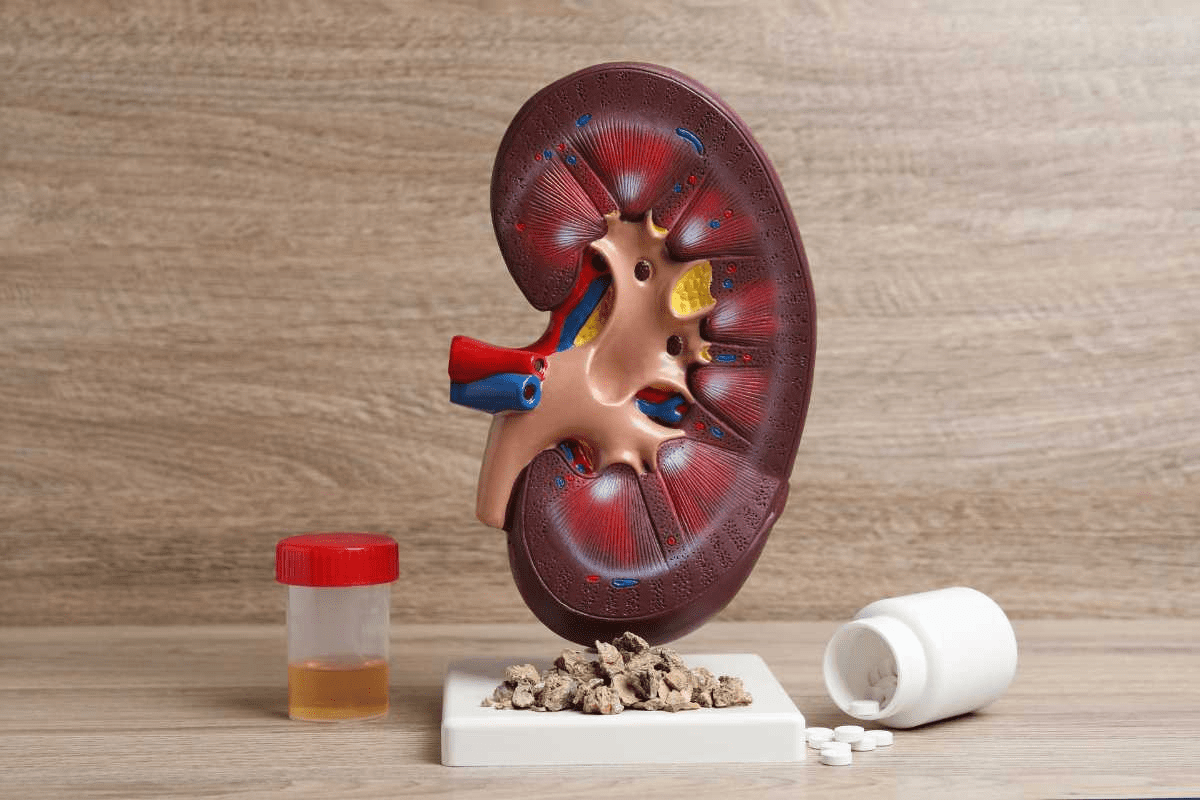
Kidney stones are a big health problem globally. They affect about 10% of adults in the United States. Knowing the causes and risk factors is key to preventing and managing them.
By eating right, drinking plenty of water, and managing health issues, you can lower your risk. This helps in avoiding kidney stones.
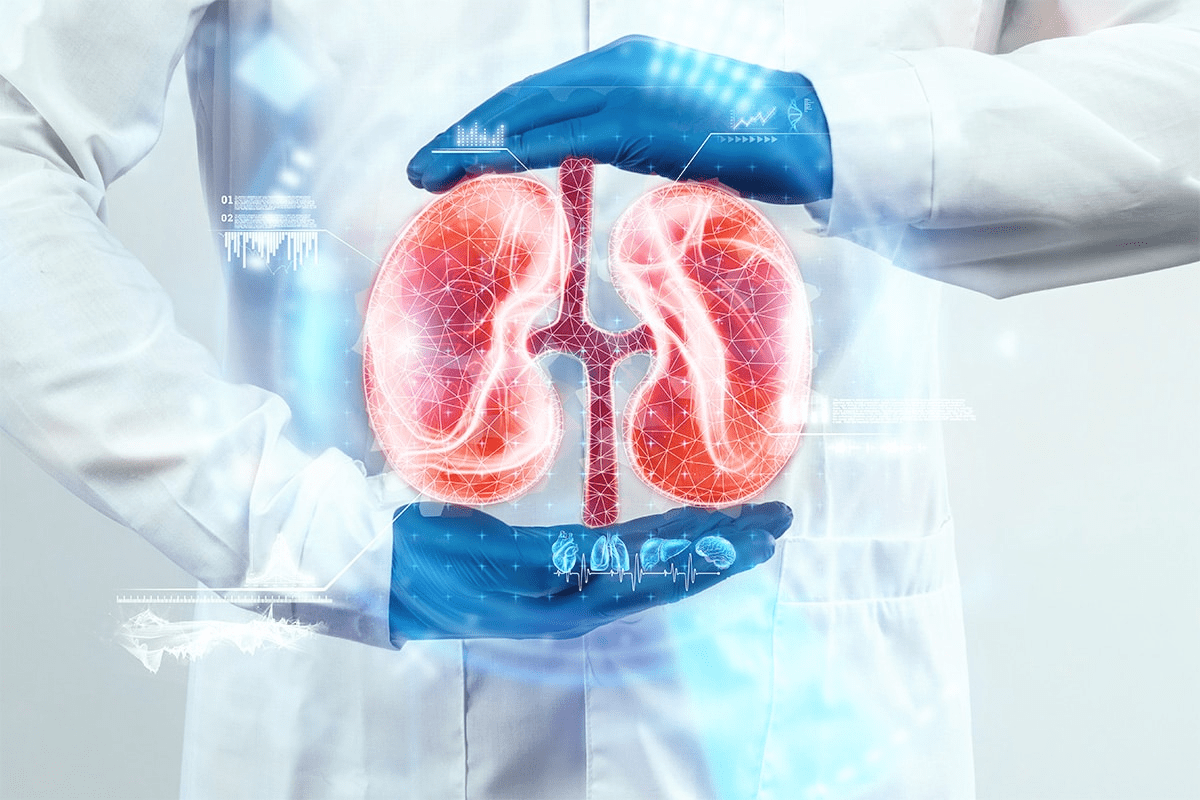
Nephrolithiasis is the medical term for kidney stones. It’s a common problem worldwide. The word comes from “nephros,” meaning kidney, and “lithiasis,” meaning stone.
Not everyone is equally affected by kidney stones. Some groups face a higher risk. This is due to genetics, diet, and environment.
The term “nephrolithiasis” describes kidney stones. Knowing where the term comes from helps us understand the condition better.
Term | Definition |
Nephrolithiasis | Formation of kidney stones |
Kidney stones are a serious health issue. They need quick medical care to avoid serious problems.
Kidney stones are hard deposits that form inside the kidneys. The most common type is calcium oxalate stones.
These stones form when calcium and oxalate combine in the urine. A diet high in animal protein, low fluid intake, and certain medical conditions can increase the risk.
Maintaining a balanced diet and staying hydrated can help prevent kidney stones.
Knowing the risk factors for kidney stones is key to preventing and managing them. Some risks can’t be changed, but others can be. This helps lower the chance of getting kidney stones.
Non-modifiable risks include age, gender, and family history. Men face a higher risk than women, and the risk grows with age. Also, those with a family history of kidney stones are more likely to get them.
Changing your lifestyle can help lower the risk of kidney stones. Drinking lots of water, staying at a healthy weight, and eating well are important. Also, eating less of foods high in oxalate, sodium, and animal protein can help.
By knowing these risks and making lifestyle changes, you can lower your chance of getting kidney stones.
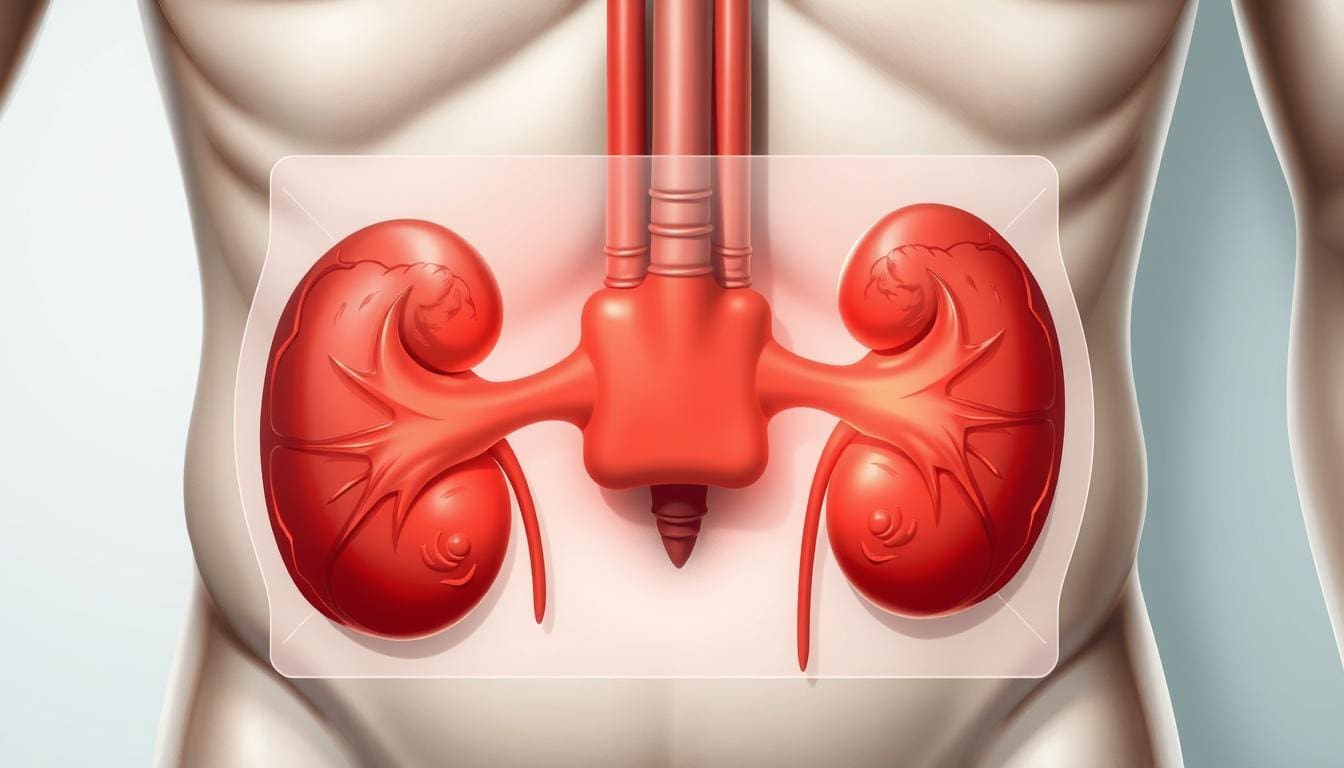
Kidney stones often cause severe pain, known as renal colic. This pain is a key symptom that prompts people to seek medical help.
Renal colic is intense, crampy pain that starts in the back and goes to the lower abdomen or groin. It happens when a stone moves through the urinary tract, irritating the lining and causing spasms. This pain is very severe and is often described as one of the worst pains.
Other symptoms can come with kidney stones. These include hematuria (blood in the urine), nausea, and vomiting. Some people may also feel the need to urinate often or have a fever and chills if there’s an infection.
Not all kidney stones cause symptoms. Some are silent, meaning they don’t show any symptoms and are found by chance during imaging studies. These silent stones might not need immediate treatment but should be watched to avoid problems.
Dealing with symptoms of kidney stones can be scary. Knowing the symptoms and how they present is key to getting the right medical care. This knowledge helps patients understand their diagnosis and treatment options better.
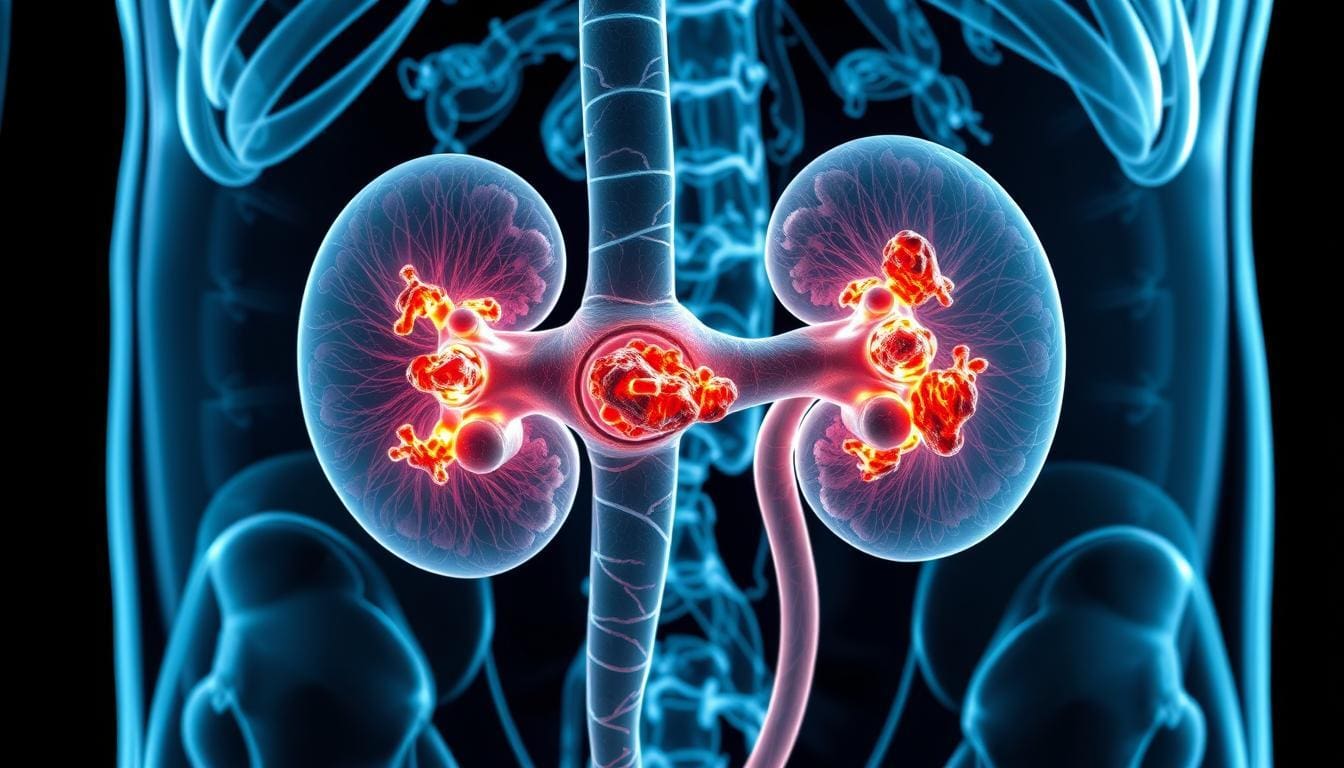
To find kidney stones, doctors use many methods. They look at images, do lab tests, and analyze the stones. This way, they can spot and treat kidney stones well.
Imaging is key in finding kidney stones. The main ways to do this are:
A top urologist says, “The right imaging depends on the patient’s situation and history.” (
“The diagnosis of kidney stones has evolved significantly with advancements in imaging technologies,”
– Medical Expert, Urologist).
Lab tests are vital for patients with suspected kidney stones. They include:
Laboratory Test | Purpose |
Urinalysis | To check for blood in the urine, infections, or other issues |
Blood Tests | To see how well the kidneys are working and check for imbalances |
Urine Culture | To find urinary tract infections |
Knowing what the stone is made of helps doctors understand why it formed. This involves:
By using images, lab tests, and stone analysis, doctors can fully understand kidney stone disease. This helps them manage and prevent it better.
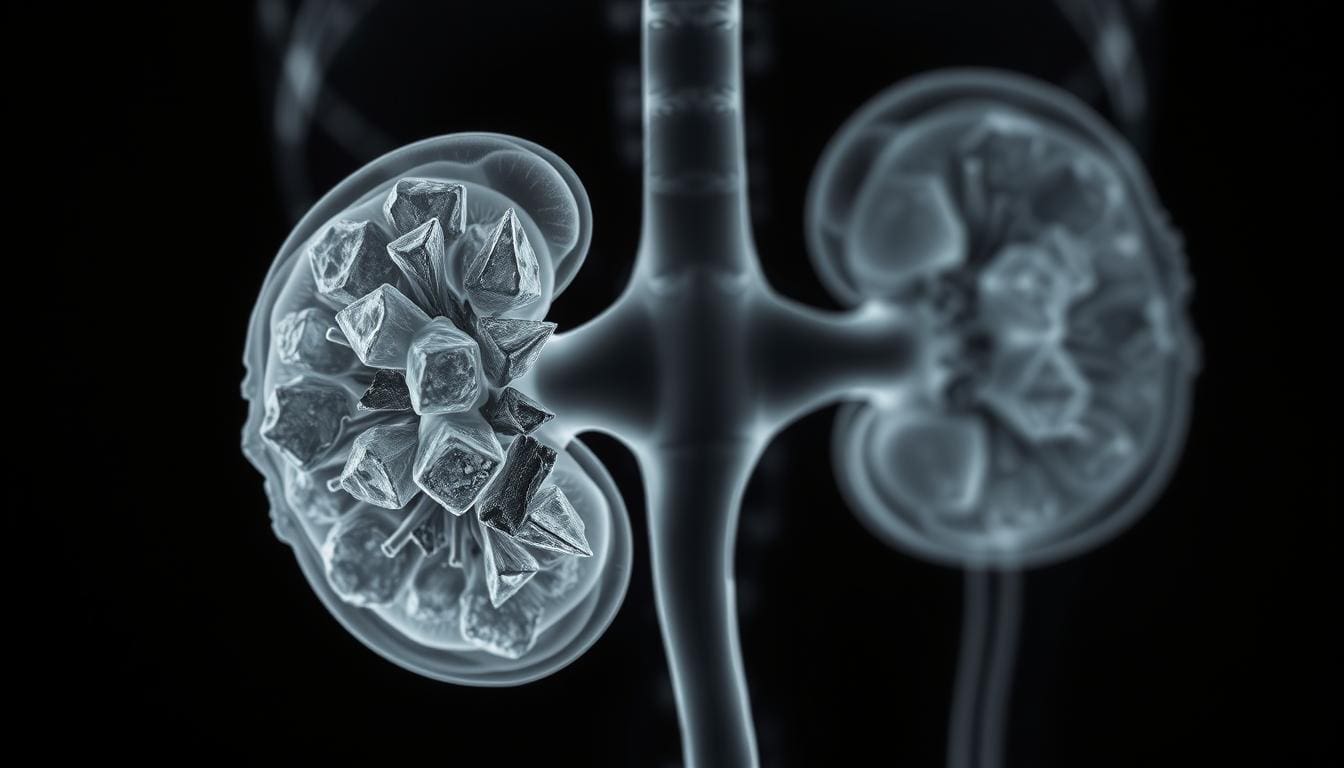
Kidney stones can cause serious problems if not treated. These issues can affect a person’s quality of life and health.
One big problem is urinary tract obstruction. A stone in the ureter can block urine flow. This causes a lot of pain and can lead to more serious problems if not fixed quickly.
A study in the Journal of Urology found that this blockage can increase pressure in the kidney. This can damage the kidney if not treated.
“The presence of a stone can cause obstruction, which may lead to infection, renal damage, or even loss of kidney function if not treated promptly.”
Source: American Urological Association
Kidney stones can also raise the risk of urinary tract infections (UTIs). These infections can turn into sepsis if bacteria get into the blood. Sepsis is a very serious condition that needs quick medical help.
Complication | Description | Potential Consequences |
Urinary Tract Obstruction | Blockage of urine flow due to a stone | Renal damage, severe pain |
Infection and Sepsis | UTIs that can progress to sepsis | Life-threatening condition, organ failure |
Untreated kidney stones can harm kidney function. This is more likely if there are many stones or if stones block the kidneys often. This can make it harder for the kidneys to remove waste and extra fluids from the blood.
People with a history of kidney stones might be more likely to get chronic kidney disease (CKD). CKD is when the kidneys slowly lose function over time.
It’s very important to diagnose and treat kidney stones early. This helps avoid these problems and ensures the best health outcomes for patients.
Treating kidney stones, or nephrolithiasis, involves different methods. These depend on the stone’s size, location, and type, and the patient’s health. The main goal is to ease symptoms, prevent complications, and lower the chance of future stones.
For small stones, the first step is often conservative management. This includes using pain medicines and staying hydrated. Drinking lots of water helps flush out the stone.
If conservative methods don’t work, surgery might be needed. There are several options:
Each treatment plan is customized. It considers the stone’s size, location, and type, along with the patient’s health and medical history.
Conclusion: Prevention Strategies and Living with Kidney Stone Disease
Staying informed and taking preventive steps can lower your risk of kidney stones. This improves your overall quality of life.
Nephrolithiasis, also known as kidney stones, is a medical condition. It happens when small, hard mineral deposits form inside the kidneys.
Symptoms of kidney stones include severe pain in the side or back. You might also feel nausea and vomiting, or have a fever. Some people don’t show any symptoms at all.
Kidney stones can be caused by many things. These include dehydration, diet, genetics, and certain medical conditions. Often, the exact cause is unknown.
Kidney stones are usually diagnosed with imaging tests. These include X-rays, CT scans, or ultrasounds. A healthcare provider may also do a physical exam and take your medical history.
Treatment for kidney stones depends on the stone’s size and location. It also depends on how severe your symptoms are. Treatment options include pain management, staying hydrated, and sometimes surgery to remove the stone.
While some risk factors can’t be changed, there are steps to reduce the risk of kidney stones. These include staying hydrated, eating a healthy diet, and managing any underlying medical conditions.
A kidney stone forms in the kidney, while a ureteral stone forms in the ureter. Both can cause similar symptoms, but the location and treatment may differ.
Yes, there are several types of kidney stones. These include calcium oxalate stones, uric acid stones, and cystine stones. The type of stone can affect treatment options.
Yes, people who have had kidney stones are at higher risk of getting another one. But there are steps to reduce this risk, including staying hydrated and managing any underlying medical conditions.
Managing kidney stones involves lifestyle changes and medical treatment. Lifestyle changes include staying hydrated and eating a healthy diet. Medical treatment includes pain management and sometimes surgery to remove the stone.
Repeated episodes of kidney stones can increase the risk of kidney damage and chronic kidney disease. But with proper treatment and management, many people with a history of kidney stones can lead normal, healthy lives.
Key Facts About Nephrolithiasis Understanding Kidney Stones – https://pmc.ncbi.nlm.nih.gov/articles/PMC9914194/
Subscribe to our e-newsletter to stay informed about the latest innovations in the world of health and exclusive offers!
WhatsApp us